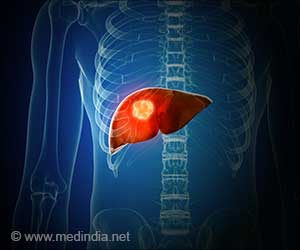A second generation lab on a silicon chip called the MitoChip v2.0 that rapidly and reliably sequences all mitochondrial DNA, for the first time has been developed by researchers
With the increase of analytical capabilities of high-tech laboratory tools, like computers, their updating is often conducted publicly . NIH grantees report they have developed a second generation "lab on a silicon chip" called the MitoChip v2.0 that for the first time rapidly and reliably sequences all mitochondrial DNA, in the September issue of the Journal of Molecular Diagnostics. Mitochondria which are the energy-producing organelles in cells, are unique because they are equipped with their own genetic instructions distinct from the DNA stored in the cell nucleus.
The authors say their full-sequence chip will be a key tool in accelerating research on mitochondrial DNA, a growing area of scientific interest. This interest stems from data that suggests natural sequence variations and/or mutations in each person's mitochondrial DNA could be biologically informative in fields as diverse as cancer diagnostics, gerontology, and criminal forensics.According to Dr. Joseph Califano, a scientist at Johns Hopkins University School of Medicine in Baltimore and senior author on the paper, the MitoChip v2.0 showed in his group's hands better sensitivity that its predecessor to sequence variations in head and neck cancer samples. The v2.0 also detected nearly three dozen variations in the non-coding D-loop, long considered to be a sequencing no-man's land and which the original MitoChip did not include.
"At this point, we don't foresee a MitoChip v3.0," said Califano, whose research was supported by the NIH's National Institute of Dental and Craniofacial Research. "The v2.0 is a very good tool in that we've also arrayed 500 of the most common haplotypes - or grouped patterns of known DNA variations - banked in the mitochondrial public database."
Mitochondria are oblong, thread-like structures dispersed throughout the cell's cytoplasm. Hundreds to thousands of mitochondria exist in each human cell, occupying up to a quarter of their cytoplasm. Sometimes informally described as "cellular power plants," mitochondria convert organic materials into ATP, the cell's energy currency and without which life would cease.
As early as the 1920s, scientists uncovered clues that mitochondria might play a role in causing cancer. But like the other DNA in the cell nucleus, scientists lacked the needed research tools throughout most of the 20th century to systematically study the chemical composition of the mitochondrial genome, or complete set of genes, and its association to human disease.
In the early 1980s, scientists in England performed the then-Herculean feat of sequencing the complete human mitochondrial genome. The genome consisted of 16,568 base pair, or units, of DNA and encoded 37 contiguous genes. But because of the balky sequencing tools of the day and their high cost, much of the subsequent research progressed slowly or stalled.
The chip exploited the fact that DNA exists naturally as a double-stranded molecule. By gathering mitochondrial DNA and breaking it into short, single-stranded bits, the scientists showed that each bit would pair, or hybridize, with its complementary sequence arrayed on the chip. By crude analogy, each bit is like a unique magnet that sticks to its mirror image.
The Affymatrix chip enabled laboratories to resequence the mitochondrial genome much faster than the traditional manual and automated strategies. Just as importantly, like an iPod to music lover, the chip served as the broad technological platform for laboratories to customize arrays more attuned to their research interests.
In 2004, Dr. Anirban Maitra and his colleagues at Johns Hopkins did exactly that with the MitoChip v1.0. In addition to nitty-gritty technical innovations that vastly improved the rate and speed of the chip, the v1.0 marked the first mitochondrial resequencing microarray designed as a potential screening tool for cancer. "With mitochondrial DNA, there is a mass advantage," said Dr. Anirban Maitra, an author on this month's paper whose research is supported by the NIH's National Cancer Institute. "Whereas nuclear DNA contains just two copies of every gene, there are literally hundreds of mitochondria in most cells. If you are screening saliva or other bodily fluids with a limited number of cells to analyze, mitochondrial DNA gives you more to work with and a better chance of detecting mutations that might be associated with a developing cancer."
Dr. Maitra said that despite the original Mitochip's 96 percent success rate assigning base calls, there was room for improvement. Led by Drs. Shaoyu Zhou and Keyaunoosh Kassauei, the Hopkins group cobbled together the MitoChip v2.0. reported in this month's Journal of Molecular Diagnostics. It yielded essentially the same base-call success rate as its predecessor, showed near perfect reproducibility in replicate experiments, and detected more variations than the first-generation chip.
As a proof of principle, the Mitochip v2.0 also detected 31 variations in the non-coding D-loop of 14 head and neck tumor samples. Included in this tally were several mutations that possibly are informative of the disease.
"The real interesting thing is nobody has been able to study these D-loop alterations very well," said Califano "They clearly occur in tumor cells, and there is some type of selection process for them. But their functional significance has been hard to know. Now, you can sequence the D loop so readily and begin to look harder for associations in certain cancers."









